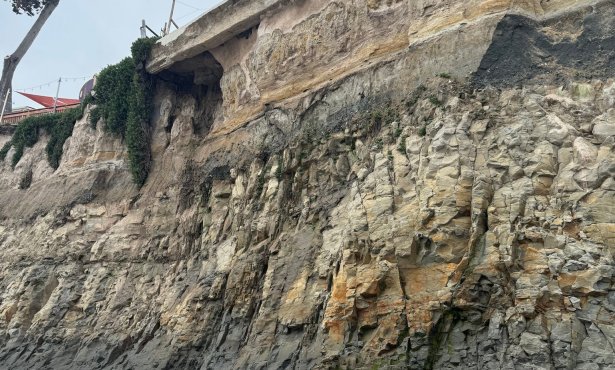Before and After the Bomb
The New Modern: Pre- and Post-War Japanese Photography
At the Santa Barbara Museum of Art. Shows through April
1.
Reviewed by Alissa J. Anderson
 The New Modern, currently on view at the
The New Modern, currently on view at the
Santa Barbara Museum of Art, takes an expansive look at art
photography in Japan before and after World War II. Spanning from
the 1920s to the ’90s, the exhibition displays 21 photographs from
the museum’s permanent collection.
The earlier photographs in the show capture the artful 1930s
gaze of the group known as pictorialists. In the United States,
these pictorialist photographers experimented with photography as a
fine art. Their use of soft focus created an impressionist,
painterly quality. By experimenting with a wide range of light and
shadow, the pictorialists conveyed a moody dreaminess that
distinguished them from more mainstream or documentary work.
Blending Western influences with their own notions of poetry and
art, these Japanese photographers created a unique lineage of art
photography. For instance, early pictorialist Yamamoto Kansuke also
integrated modernist elements into his aesthetic. “Untitled (Fence
and Wall) c. 1930s” is a vintage gelatin silver print that
demonstrates the abstract quality of the shapes and forms of a
simple wall. The flatness of the image, created through the use of
cropping, displays a dramatic grid-like intersection of lines that
evokes the work of Piet Mondrian.
Kansuke is the obvious standout photographer in the exhibition,
with almost half the exhibition dedicated to his work. Throughout a
period of 20 years, Kansuke’s artistic identity ranged from pre-war
pictorialist to post-war social commentator and, eventually,
surrealist. His “Untitled (Umbrella Against Fence) c. 1948” depicts
a scattered shoe and umbrella. As in the work of Magritte,
seemingly absurd imagery and arbitrary objects are meant to signify
the subconscious mind, but “Untitled (Umbrella against Fence)” is
also rife with social commentary, offering potent symbols of
devastation and loss to a country living with the after-effects of
nuclear warfare. Ueda Shoji’s “Sand Dune with My Wife c. 1950” also
depicts the post-nuclear age, juxtaposing an Americanized Japanese
businessman with his traditionally attired wife. As she stares in
the opposite direction and they both stand in a rural landscape, it
is abundantly clear these people have been displaced by the
war.



